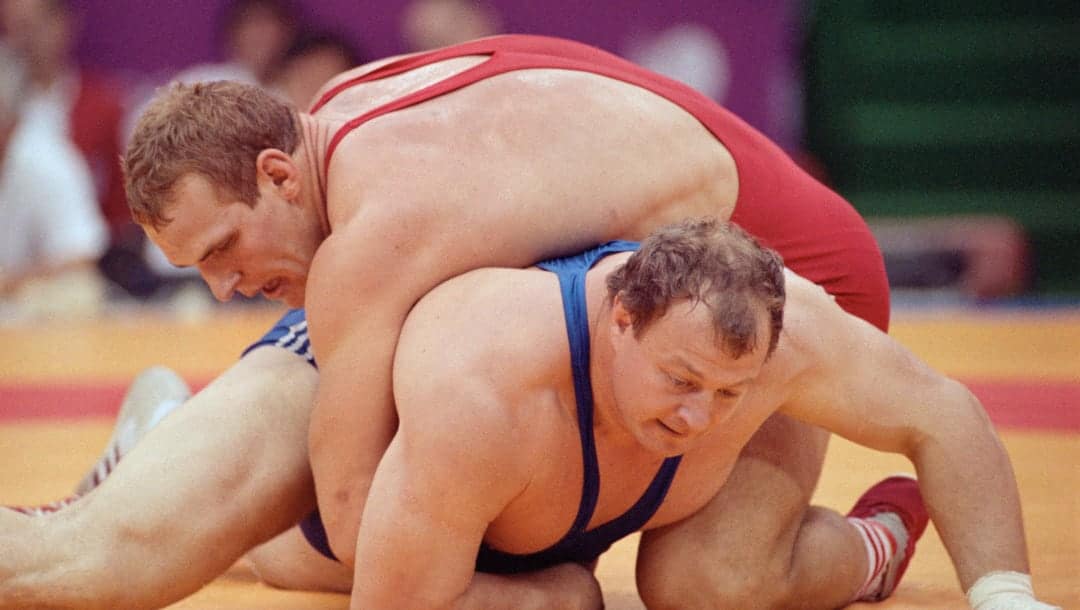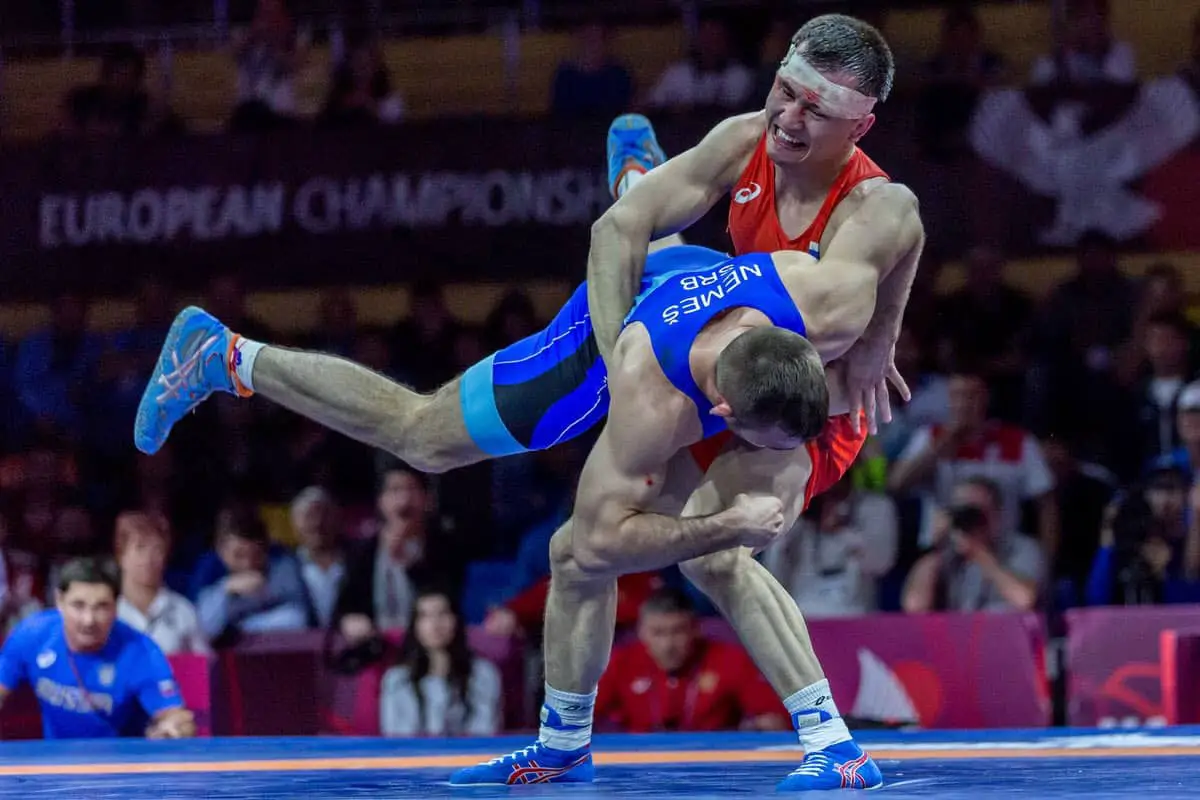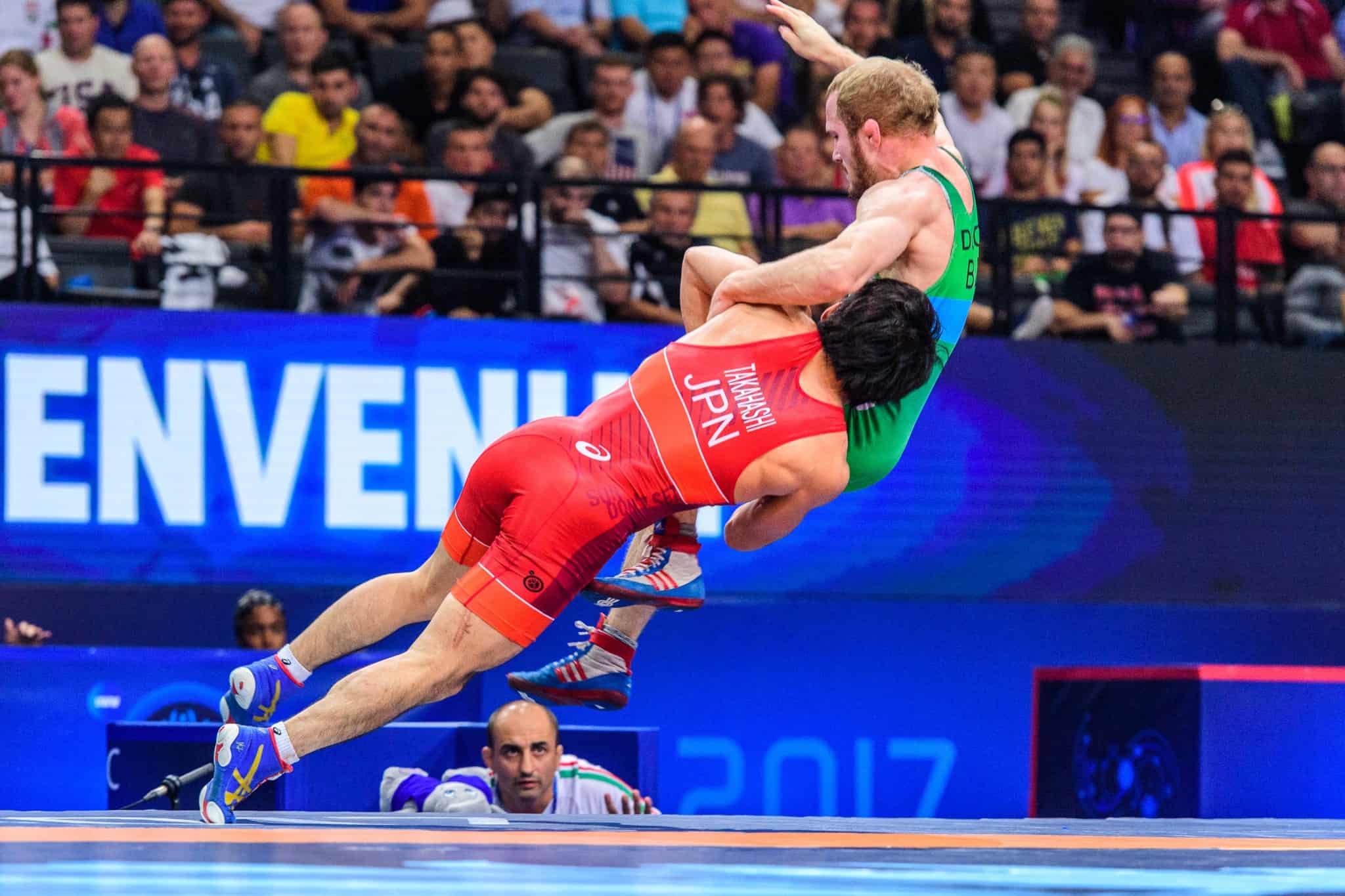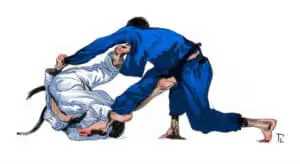Have you ever wondered who is stronger a Greco Roman or freestyle wrestler. Or maybe who is faster more agile or even more flexible. Wonder no more. In this article we will explore the physical differences between Greco Roman and freestyle wrestlers.

What are the physical differences between Greco Roman and freestyle wrestlers? The two types of wrestlers are very similar. They both have similar levels of muscle, fat, flexibility and strength (arm, leg, back, ab). Greco Roman wrestlers have stronger necks while freestyle wrestlers are slightly faster and more agile.
What Are The Body Fat And Muscle Mass Differences Between Greco Roman And Freestyle Wrestlers?

Bayraktar and Haluk (2017) studied Turkish national team members from the both the Greco Roman and freestyle squads. They found no difference in the average body mass index (BMI) and fat free mass (FFM) between the two types of athletes. The Greco Roman wrestlers had a BMI of 27.9 and freestyle wrestlers had a BMI of 27.4. Both types of wrestlers had an average FFM of 68.
Kilinc and Ozen (2015) also found no difference in BMI between Greco-Roman (25.2) and Freestyle (26.3) wrestlers.
Zaccagni (2012) studies the Italian national team and found no statistical difference relating to FFM and BMI between Greco Roman and freestyle wrestlers.
Horswill (1990) in his review of wrestling literature found that wrestlers were on average very lean and typically ranged from 8% to 13% body fat, excluding heavyweights. Bayraktar and Haluk (2017) did not find a statistical difference in the body fat percentage of Greco Roman and freestyle wrestlers.
Based on the literature both Greco Roman and freestyle wrestlers have low body fat percentages (8%-13%) and high amounts of muscle mass (FFM – 68). There appears to little difference in the leanness and muscularity between the two types of wrestlers.
Are There Strength Differences Between Greco Roman And Freestyle Wrestlers?

Bayraktar and Haluk (2017) studied the strength ability of the difference wrestling by administrating pinch, hand grip and leg strength tests. Leg strength was measured using a dynamometer. They did not find any statistically differences between Greco Roman and freestyle wrestlers. Lopez-Gullon et al. (2011) similarly found no strength differences between the distinct wrestlers when studying arm and leg strength.
Basar et al. (2014) studied international level Greco Roman and freestyle wrestlers. They had the wrestlers perform a number of bridging exercises to test ab strength and core stabilization. They found no differences between the 2 groups.
Who Has Greater Flexibility And Balance Greco Roman Or Freestyle Wrestlers?

To test the flexibility of the wrestlers Bayraktar and Haluk (2017) had the wrestlers perform a modified sit and reach test. Where athletes sit with their back and arms full extended and then try to extend as far as possible to and past their toes while keeping their legs straight. There was no significant difference between the flexibility of freestyle and Greco Roman wrestlers.
To test the balance of the wrestlers Bayraktar and Haluk (2017) had the wrestlers perform the standing stork test and
the standing stork test-blind. To perform a standing stork test a wrestler will place the sole of his foot on his opposite knee. Then will stance on the ball of one foot and hold the position for as long as possible. Freestyle wrestlers had much greater levels of balance than Greco Roman wrestlers.
Based on the study neither type of wrestler were more flexible than the other. However, freestyle wrestlers had greater balance which is to be expected as freestyle wrestlers often find themselves in positions where they need to balance on one leg for prolonged periods time particularly when defending against single leg takedowns.
What Are The Speed And Agility Differences Between Greco Roman And Freestyle Wrestlers?

To test the speed of the wrestlers Bayraktar and Haluk (2017) had the wrestlers perform 10m and 20m sprints. Freestyle wrestlers were faster over 10m (1.692 seconds) and 20m (2.963 seconds) compared to Greco Roman wrestlers who ran the 10m in 1.761 seconds and the 20m in 3.084 seconds.
To test the agility of the wrestlers Bayraktar and Haluk (2017) had the wrestlers perform a pro agility test. To perform a pro agility test an athlete runs between Three marker cones which are placed five yards apart. The athlete starts in the middle cone, runs to the right cone, turns and runs to the left cone, turns and finishes by running past the middle cone. Freestyle wrestlers were more agile than Greco Roman wrestlers completing the agility in test 4.478 seconds compared to 4.585 seconds.
Freestyle wrestlers were statistically significantly faster and more agile than Greco Roman wrestlers. As freestyle wrestler involves more leg movement and change in directions these results are expected.
Conclusion
Greco Roman and freestyle wrestlers are both very similar athletes. This is unsurprising as the sports share many similarities and many of the wrestlers have trained in both styles at some point in their careers.
Based on the current literature there is no difference in the body fat and muscle mass between the two types of wrestlers. Both wrestlers are very lean and muscular. There is no difference in arm, leg and ab strength levels between the wrestlers, however there is evidence Greco Roman wrestlers may have stronger necks. There is no difference in flexibility but freestyle wrestlers did have higher levels of balance. Freestyle wrestlers were slightly quicker and more agile than Greco Roman wrestlers.
The differences between the athletes are minor but seem to be explained by the presence of leg attacks in freestyle wrestlers which forces athletes to be quicker, more agile and have greater levels of balance when attacking and defending leg attacks.

Sources
BAYRAKTAR, I. and KOC, H., 2017. A study of profile and comparison for Turkish Greco-Roman and freestyle wrestlers who prepared for Rio 2016. Ovidius University Annals, Series Physical Education & Sport/Science, Movement & Health, 17(2), pp.190-199.
Basar, S., Duzgun, I., Guzel, N.A., Cicioğlu, I. and Çelik, B., 2014. Differences in strength, flexibility and stability in freestyle and Greco-Roman wrestlers. Journal of back and musculoskeletal rehabilitation, 27(3), pp.321-330.
García-Pallarés, J., López-Gullón, J.M., Muriel, X., Díaz, A. and Izquierdo, M., 2011. Physical fitness factors to predict male Olympic wrestling performance. European journal of applied physiology, 111(8), pp.1747-1758.
Horswill, C.A., 1992. Applied physiology of amateur wrestling. Sports Medicine, 14(2), pp.114-143.
Kılınç, F. and Özen, G., 2015. Elit serbest ve grekoromen güreşçilerin anaerobik güç değerlerinin ve kalp atım sayılarının karşılaştırması.
Rezasoltani, A., Ylinen, J., Bakhtiary, A.H., Norozi, M. and Montazeri, M., 2008. Cervical muscle strength measurement is dependent on the location of thoracic support. British Journal of Sports Medicine, 42(5), pp.379-382.
Zaccagni, L., 2012. Anthropometric characteristics and body composition of Italian national wrestlers. European Journal of Sport Science, 12(2), pp.145-151.
